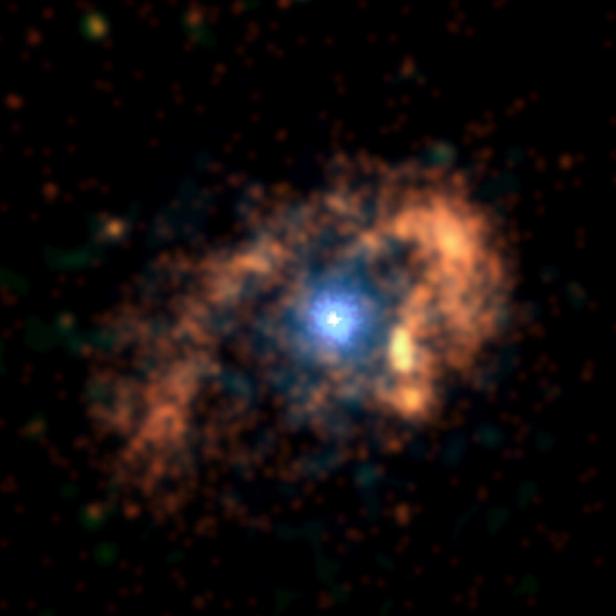
 Credit: NASA/CXC/SAO
Credit: NASA/CXC/SAO
The Hot Heart of the Little Man
A star named Eta Carinae may be the most massive star in the Galaxy; it's
certainly one of the most unusual stars. Barely 150 years ago it stood as
one of the brightest objects seen from earth; then it "erupted", throwing
off a huge amount of material (about twice as much as in our entire solar
system) in a short amount of time. Dust quickly formed in this ejecta, and
this dust shroud currently obscures the star from view. The ejecta forms a
famous cloud around the star, called the "homunculus nebula" since, in
ground-based telescopes, the cloud looks like a stick figure of a little
man, though from space, the cloud is resolved into an
hourglass shape. One of the first observations made by the Chandra X-ray Observatory was of this
famous star. The Chandra
observation (above) improves on earlier EINSTEIN observatory and ROSAT
X-ray images, in particular clearly show the bright point of extremely
hot X-rays at the heart of the homunculus, and also the extended emission
which surrounds the star like a broken ellipse. Astronomers think that the
extended emission may have been produced by an eruption of the star which
took place about 500-1000 years ago; they think the bright hot gas at the
core of the star is produced by the collision of the strong stellar wind
from Eta Car with an unseen companion.
Last Week *
HEA Dictionary * Archive
* Search HEAPOW
* Education
Each week the HEASARC
brings you new, exciting and beautiful images from X-ray and Gamma ray
astronomy. Check back each week and be sure to check out the HEAPOW archive!
Page Author: Dr. Michael F.
Corcoran
Last modified August 18, 2000


